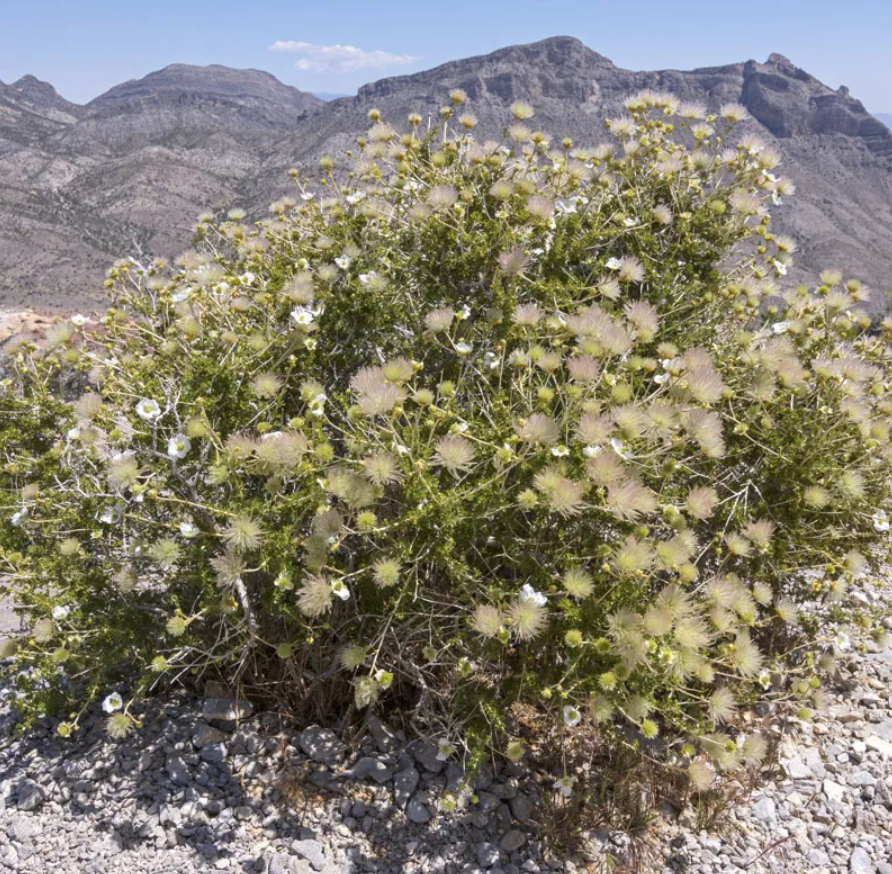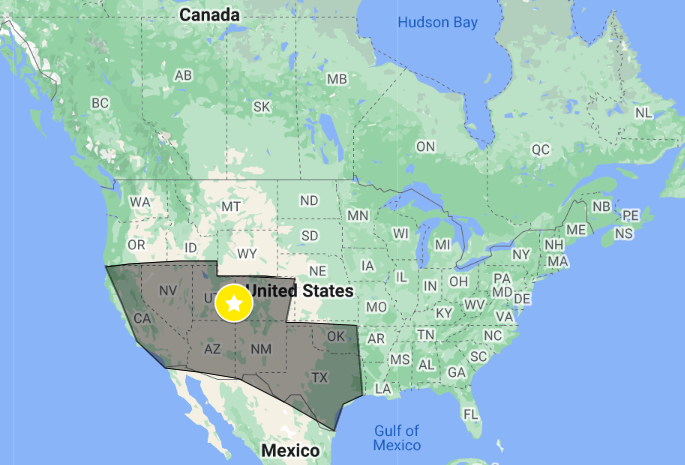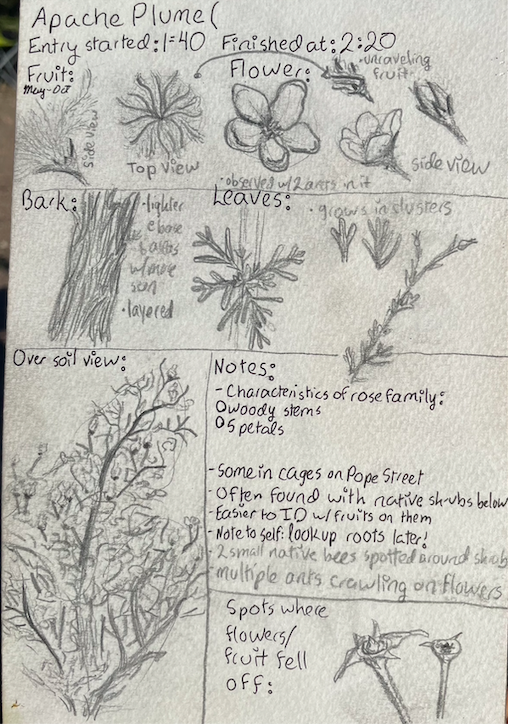Adventures of a Water Molecule
Apache Plume (Fallugia paradoxa)
Time and weather chip away at the massive rock formations that give Castle Valley its name, slowly grinding the bright red structures into the sand and soil. Nestled in this auburn sand is the tip of a taproot that belongs to an Apache Plume, or Fallugia paradoxa, on a five-acre plot of land called 270 Pope Lane in late September.
The taproot reaches through the soil searching for water and nutrients. It needs water to convert the ample sun and fresh air from the valley into useable energy. However, the dry, rust-colored soils of 270 Pope do not fully satisfy the Apache Plume. Its ancestors evolved in sites closer to water, dwelling next to rivers and streams across the American Southwest. Its undomesticated brethren thrive in semi-riparian areas with more moisture than this Apache Plume’s current location. Another plant in the Apache Plume’s family, the cliffrose, would happily thrive in this dry area. While both are members of the Rosaceae family, the cliffrose only needs the amount of water provided by the pinyon and juniper shrublands next to 270 Pope Lane.
But this Apache Plume never lived at the mercy of wild, irregular precipitation. It grew up in a nursery with regular watering cycles before getting transplanted to its current location. Even now, it suckles the precious liquid from black, plastic driplines.
Once the roots collect water, the liquid shoots upwards through specialized tubes into the trunk. From there, the water follows the Apache Plume’s structure as it divides into a handful of branches. The sun-bleached branches rise a few inches, then some bend eastward. At this point, the layered, silvery bark smooths itself out into more continuous, slightly darker bark. Occasionally, the branches provide shade to the desert’s lizards and other organisms during the hottest part of the day. The Apache Plume has no qualms about having visitors, assuming they leave its bark and roots intact.
The water continues pushing upwards through the myriad paths within the Apache Plume’s twigs towards the leaves. Not much larger than the size of a pea, the leaves vary in design, with younger ones bearing only three points and modeling a yellowish or sometimes lime green color. Those that have spent more days under the sun have had time to divide themselves into more points and acquire a deeper green color. The water ends its journey as it enters the leaf’s cells where it will be used for photosynthesis.
Some of the resources that the Apache Plume produces through photosynthesis go towards the plant’s most well-known endeavor: producing flowers and fruit. Starting in late Spring, the Apache Plume starts growing pastel green flower buds. Out from each of these, a bloom slowly unfurls five, delicate white petals. They stagger their appearances, with some starting earlier in the season and others waiting for a few weeks. Right now, in late September, the Apache Plume still displays a few small white blooms. A pair of mountaineering ants climb up the Apache Plume into the remaining open flower in search of the sweet, nutritious nectar it provides for them. Many of the bees and butterflies in the valley also covet this blossom. Some of the visitors the Apache Plume expects are the painted lady, checkered white, and two-tailed swallowtail butterflies. The Apache Plume expects many honeybees to visit as well, though few are present at this site.. However, the Apache Plume is more familiar with native bees, like the California Carpenter Bees, because its ancestors spent time with them.
After the flowers get their time in the spotlight, the true pride of the Apache Plume emerges: the signature white and pink feathered tufts that gave its common name. The buds containing the plant’s fruits open to uncover a swirl of striped cotton candy, the feather-like structures. With red shafts and white plumes, they uncurl and assemble into a fan-like pattern in the wind. This produces a shimmery pink tuft, many of which are present on the ends of the Apache Plume’s higher limbs today in late September. These are among the last of the season, but they still entice attention from several creatures in the valley, including the pollinators that helped produce them.
In a few weeks, the last of these fruits will fall off the branches and the colder weather will set in. Come winter, snow will arrive, driving the deer and elk down from the mountains. A third of the La Sals herd passes through the valley, and they like to munch on the Apache Plume’s leaves during their journey. The Apache Plume tolerates this and grows back after the weather warms up. Eventually, it will start preparing to grow flowers again once the spring comes.
By Sonia Burns



